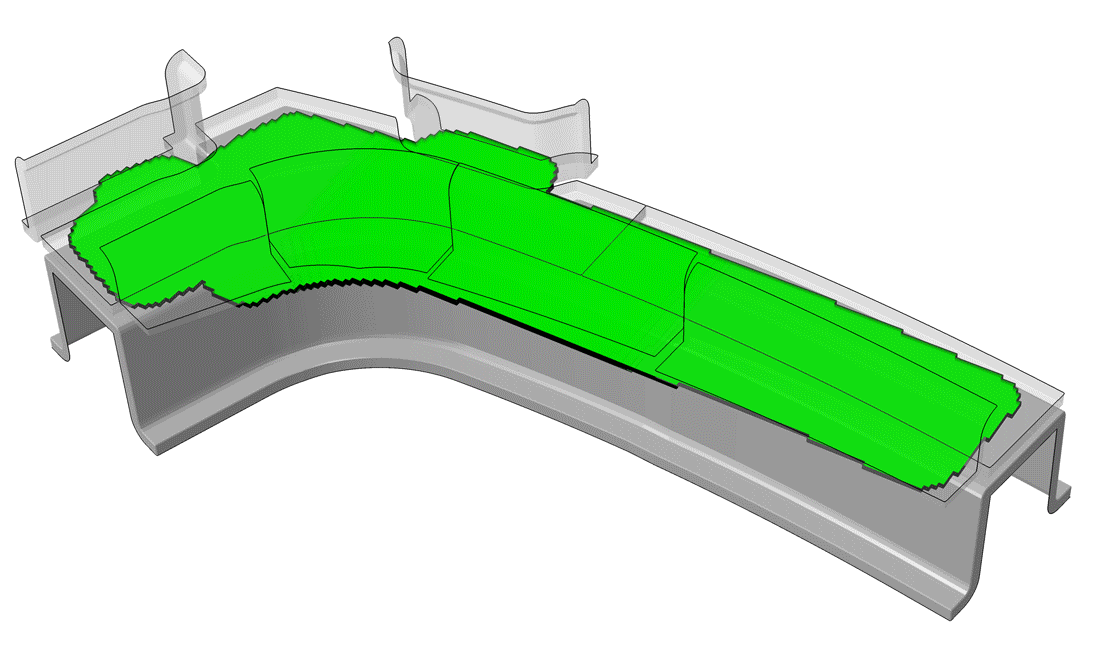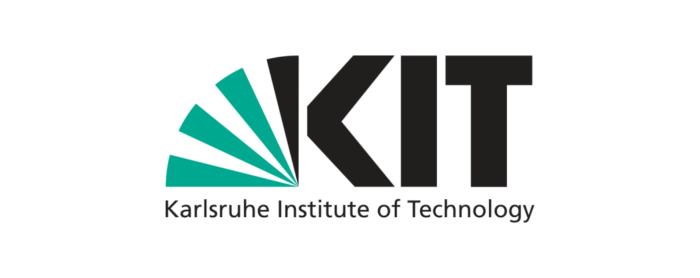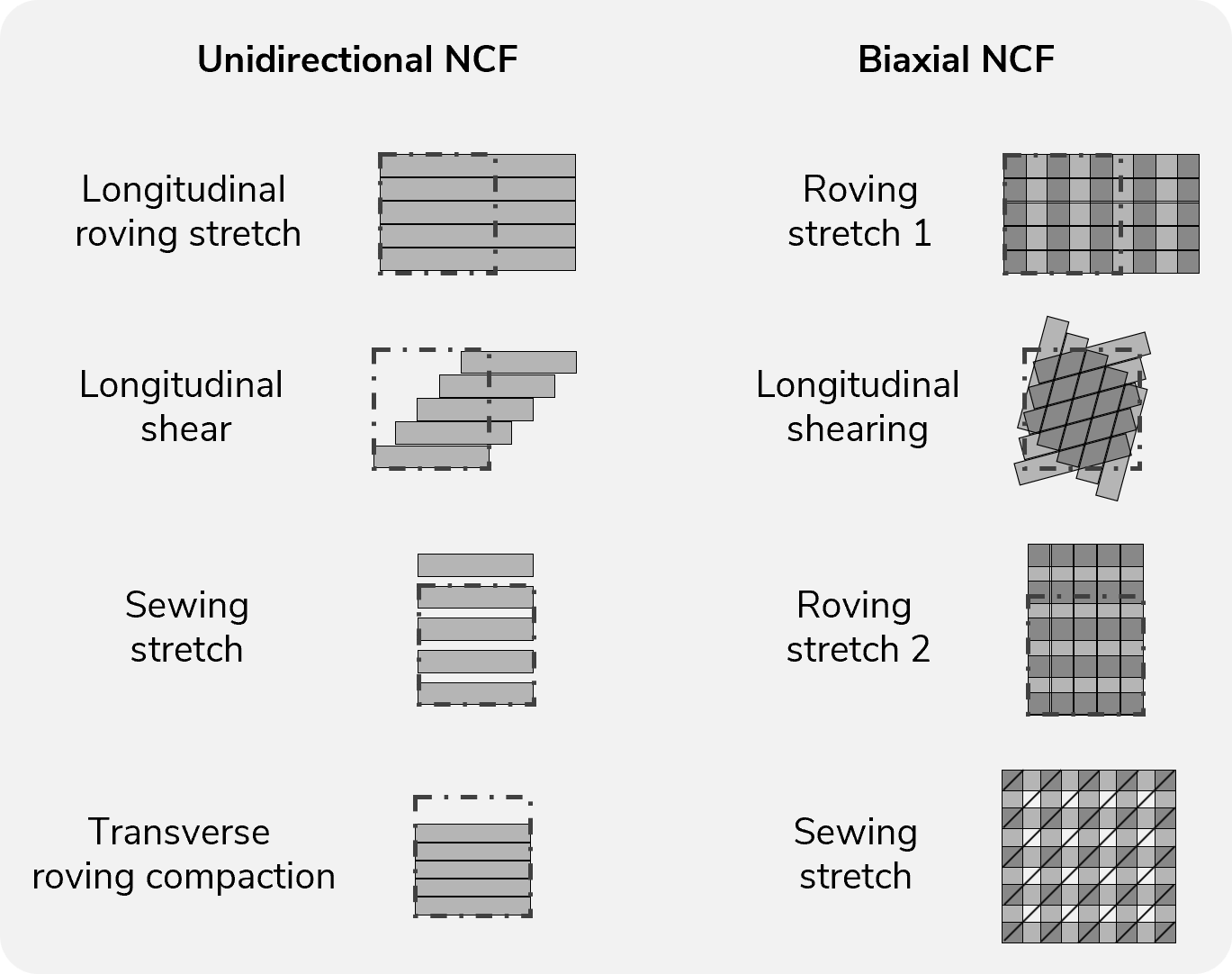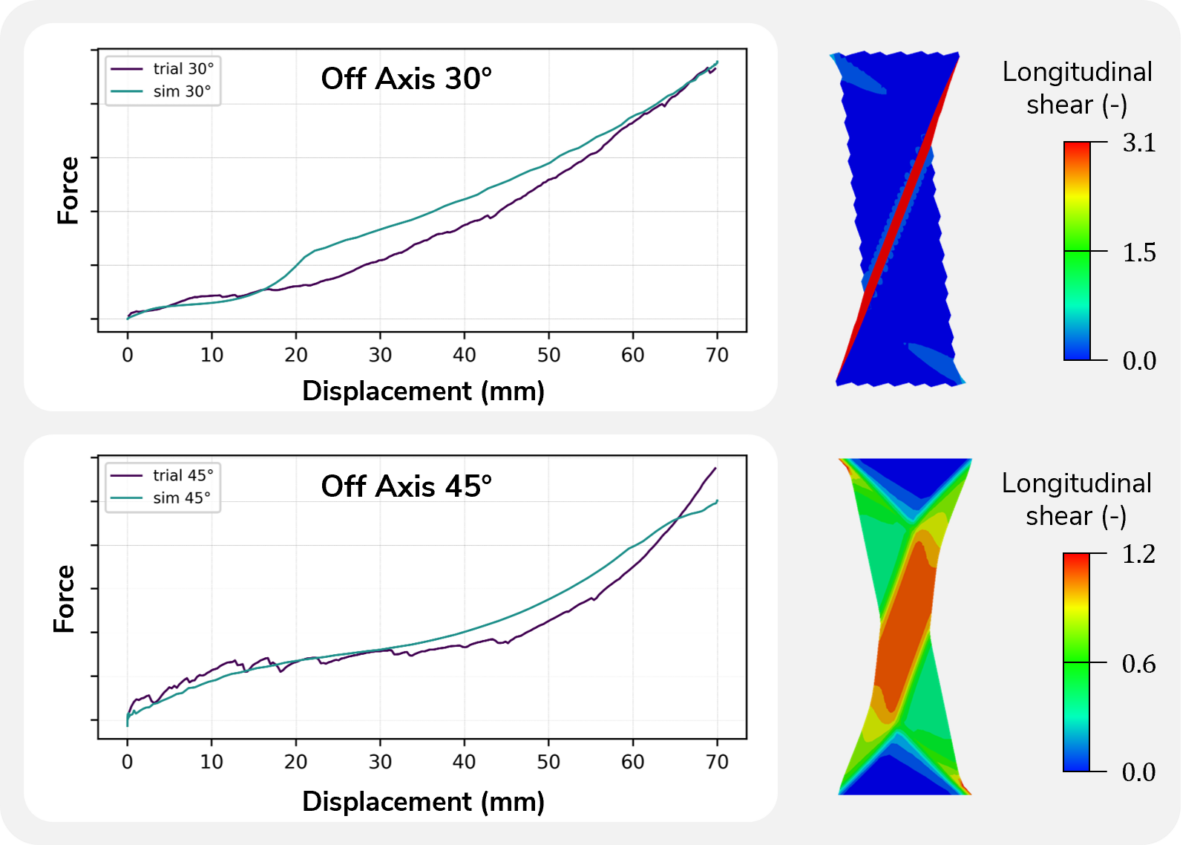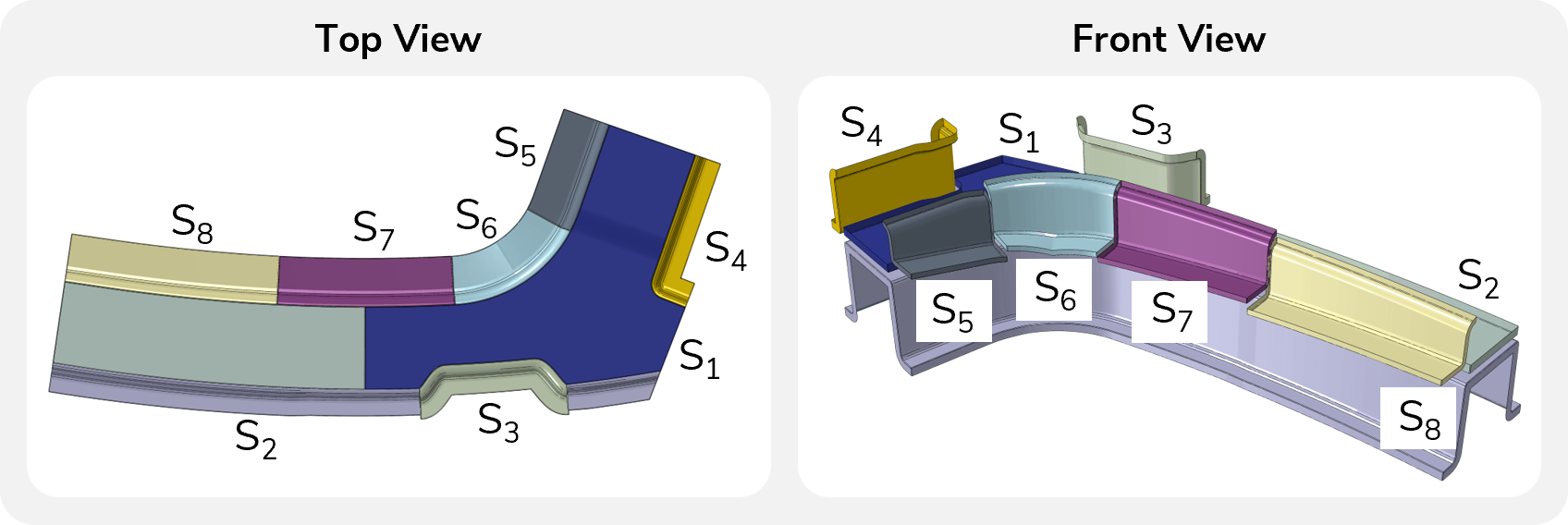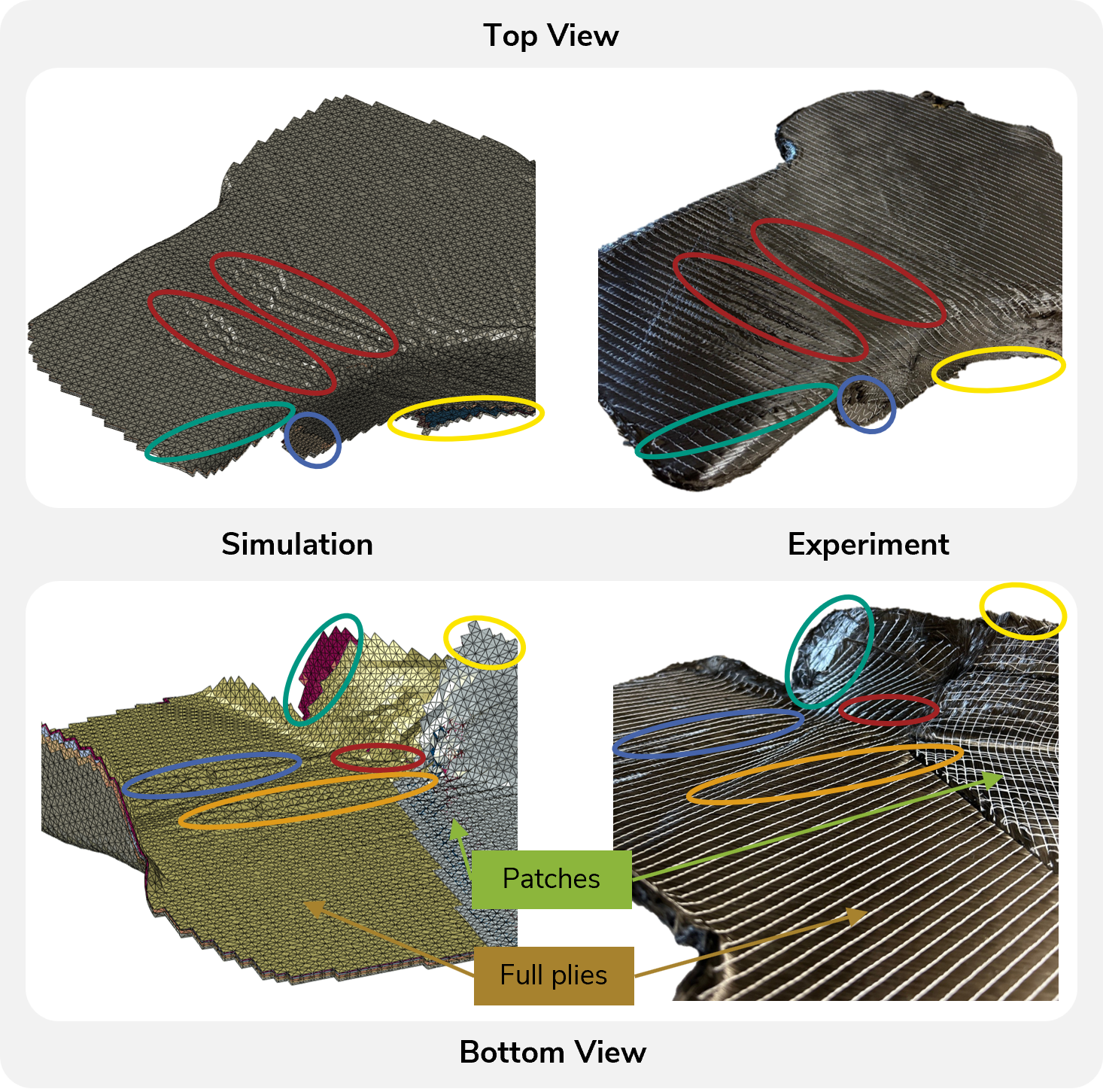Motivation
Resin Transfer Molding (RTM) requires the draping of flat engineering textiles into the three-dimensional shape of the part. This processing step is accompanied by manufacturing effects, such as an altered fiber orientation or fiber volume content. Moreover, manufacturing defects, such as gapping or wrinkling might occur. Draping simulation is a powerful tool for predicting manufacturing effects and defects and thus optimize the draping process.
Modelling draping on the macroscopic level is essential for efficiently simulating industrial-scale components. While macroscopic models for woven fabrics are already state of the art, such methods have yet to be established for NCF. Most simulations of NCF have been conducted at the mesoscopic level, where the fibers and the stitching are captured discretely. More recently, NCF models have also been developed at the macroscopic level [1, 2].
This macroscopic approach for NCF draping simulation has been adopted in the public-funded project ELECTRA and applied to a complexly shaped aerospace structure [3]. A high prediction accuracy for local wrinkling behavior is observed and the key outcomes are presented in the following.

